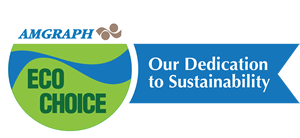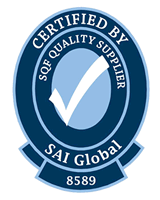As seen in the April Issue of Tobacco Reporter
 Sustainability is increasingly important to consumers as people look to do business with companies and brands that are sensitive to social and environmental issues. According to the 2015 Cone Communications/Ebiquity CSR Study, 84 percent of consumers globally say they seek out responsible products whenever possible.
Sustainability is increasingly important to consumers as people look to do business with companies and brands that are sensitive to social and environmental issues. According to the 2015 Cone Communications/Ebiquity CSR Study, 84 percent of consumers globally say they seek out responsible products whenever possible.
But what, exactly, does sustainability mean and how does it apply to the tobacco industry?
The environmental science definition is “the quality of not being harmful to the environment or depleting resources, thereby supporting long-term ecological balance.” In other words, sustainability is much more than recycling. It is one component of a company’s overall commitment to Corporate Social Responsibility (CSR).
For tobacco companies, both product packaging and the process by which that packaging is created offer significant opportunities to demonstrate a commitment to sustainability to customers and employees. By partnering with a packaging vendor whose production embraces tangible green practices, you can show how sustainability is one of your company’s values.
In the packaging world, it’s not just what you do with your packaging that matters, but how you create it, as well. There are several ways to make sustainability integral to the production process.
Start with green fuel
Is your packaging manufacturer’s operations powered by coal or oil, or do they run on renewable energy? Energy that doesn’t harvest fossil fuels helps conserve natural resources and reduces toxic greenhouse gases. Fuel cells deliver clean energy, using an electrochemical conversion that transforms natural gas fuel to hydrogen, and from hydrogen to DC power and then to high-quality AC power. The result is 90 percent efficiency compared with fossil fuel-based energy processes. Using fuel cells helps manufacturers generate electricity, domestic heat, and process heat, while enabling their operations to be more self-sustaining.
Green plants are part of the package
How green is your packaging vendor’s plant? Each building construction element should contribute to an energy-efficient, clean, and comfortable production facility. Building components may include:
- Insulated Concrete Form (ICF) wall systems to reduce energy requirements
- Geothermal systems that harvest heat absorbed at the earth’s surface from solar energy
- Radiant floor heating
- Natural light
- A ventilation system using a heat exchanger to reduce the building’s heating and cooling requirements further
Green processes and procedures
To ensure minimal impact on the environment, your packaging manufacturer should implement green processes wherever possible. Using fewer natural resources, minimizing waste, reducing energy and water consumption, and decreasing greenhouse gases and volatile organic compounds (VOCs) all serve to improve efficiency without compromising product integrity and quality. One effective way to eliminate VOCs and the risks that they pose to your customers is to partner with a packaging partner that uses water-based inks.
Green packaging and inks
Water-based inks reduce concerns about VOCs and the range of health problems associated with them, including respiratory illness, eye, nose, and throat irritation, headaches, nausea, and more. Sources of VOCs in print production environments range from the inks themselves to cleaners, solvents, emulsions, and thinners.
Because water-based inks are cured with an electronic beam (EB) instead of solvents, they are much cleaner for the environment. There is no danger of migration or leeching of ink solvents, which could affect the taste of the tobacco as well as lead to additional detrimental side effects for the consumer. Water-based inks offer aesthetic benefits, as well, providing a crisper and more rigid solid ink fill in packaging graphics.
Furthermore, the benefits of water-based inks extend well beyond the packaging they adorn. After print runs are completed, there are no solvents to dispose of, no emissions emanating from those solvents, and no workers exposed to harmful VOCs during plate and press cleanup.
Demand transparency about green practices
As you look to source packaging vendors, ask them about their commitment to sustainability. What is the energy source for their plant? What green practices do they employ in their processing? Are their inks solvent-based or water-based? Vendors should be forthright and transparent in their responses. Additionally, ask potential vendors if they are meeting sustainability standards set by respected governing bodies. For instance, in the food industry the Nestle Initiative on Packaging Safety and Compliance addresses specifically the ink usage for decoration on packaging materials, including a list of no-go chemicals, and offers guidelines for sustainable practices. Does the packaging vendor adhere to these guidelines? Also, retailers and foodservice vendors around the world recognize the Safe Quality Food (SQF) Program offered by the Safe Quality Food Institute as a rigorous, credible food safety management system. Ask potential packaging vendors if they subscribe to SQF standards or similar type mandates.
Green packaging appeals to green consumers
Finding a packaging vendor whose products and processes reflect a true commitment to sustainability is smart business for tobacco manufacturers on several fronts. By doing so, they protect their products from contamination; contribute to the sustainability of the environment; and appeal to the concerns of today’s consumers whose purchase decisions are increasingly being made with consideration of a brand’s demonstration of corporate social responsibility.
See article on page 34 of the April 2017 issue of Tobacco Reporter









